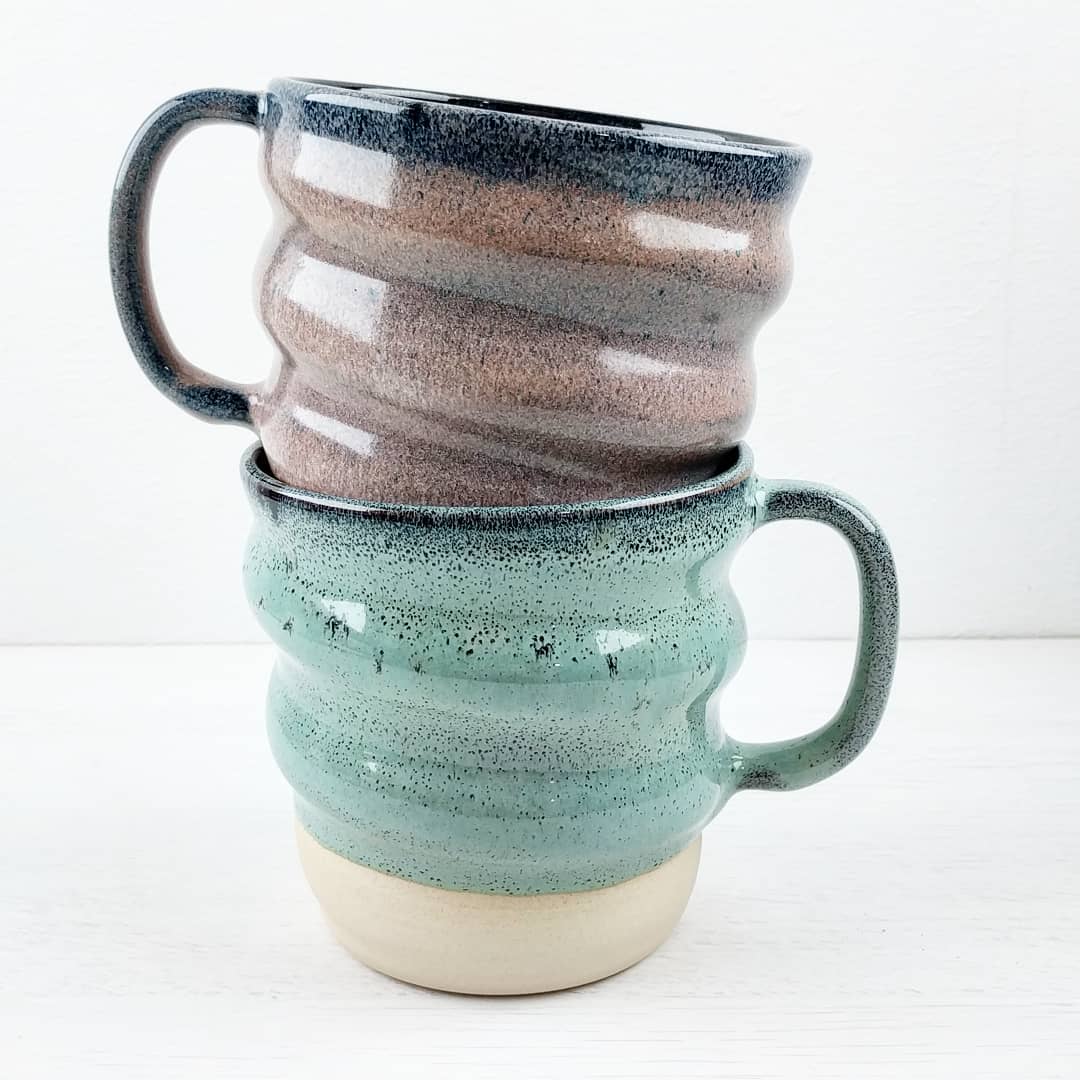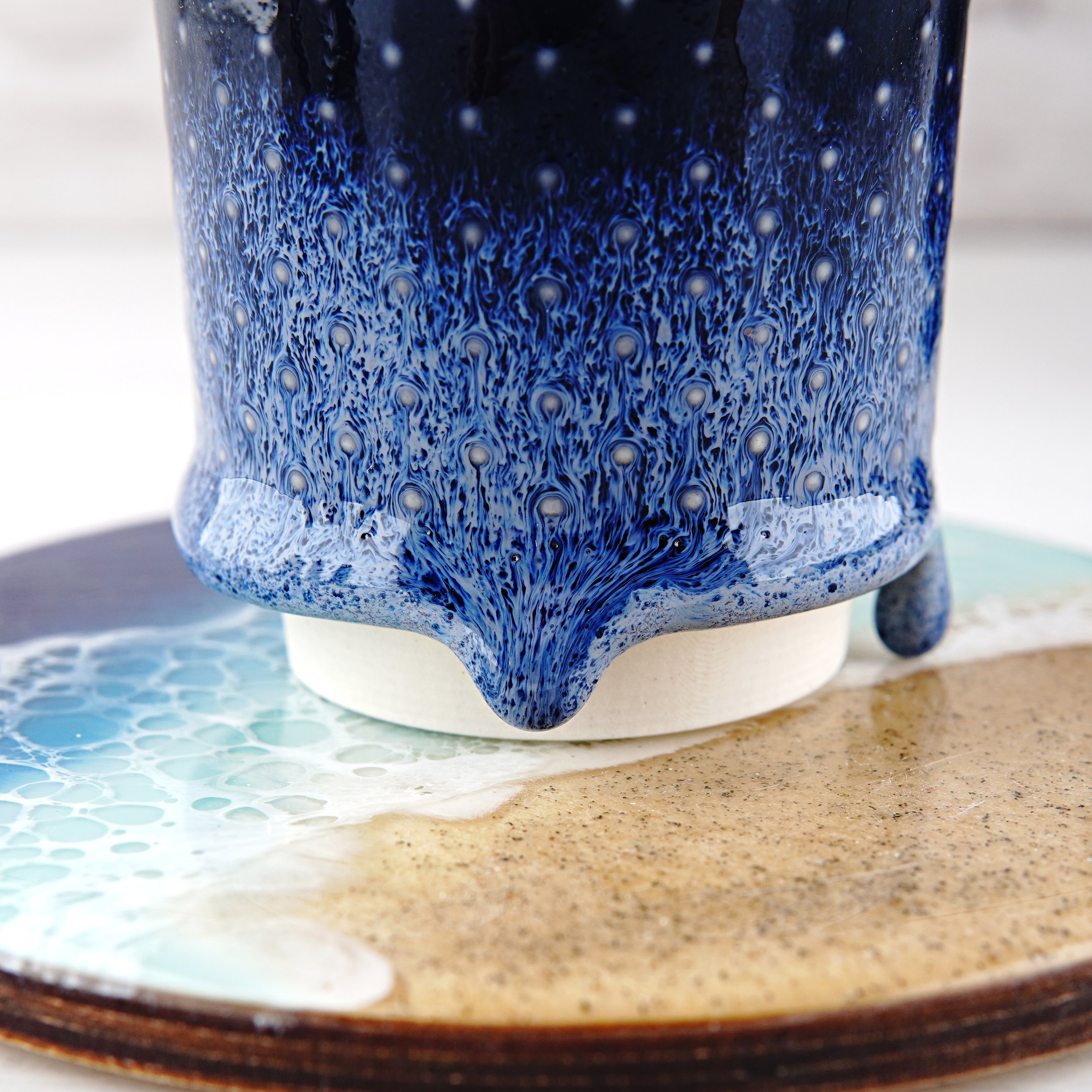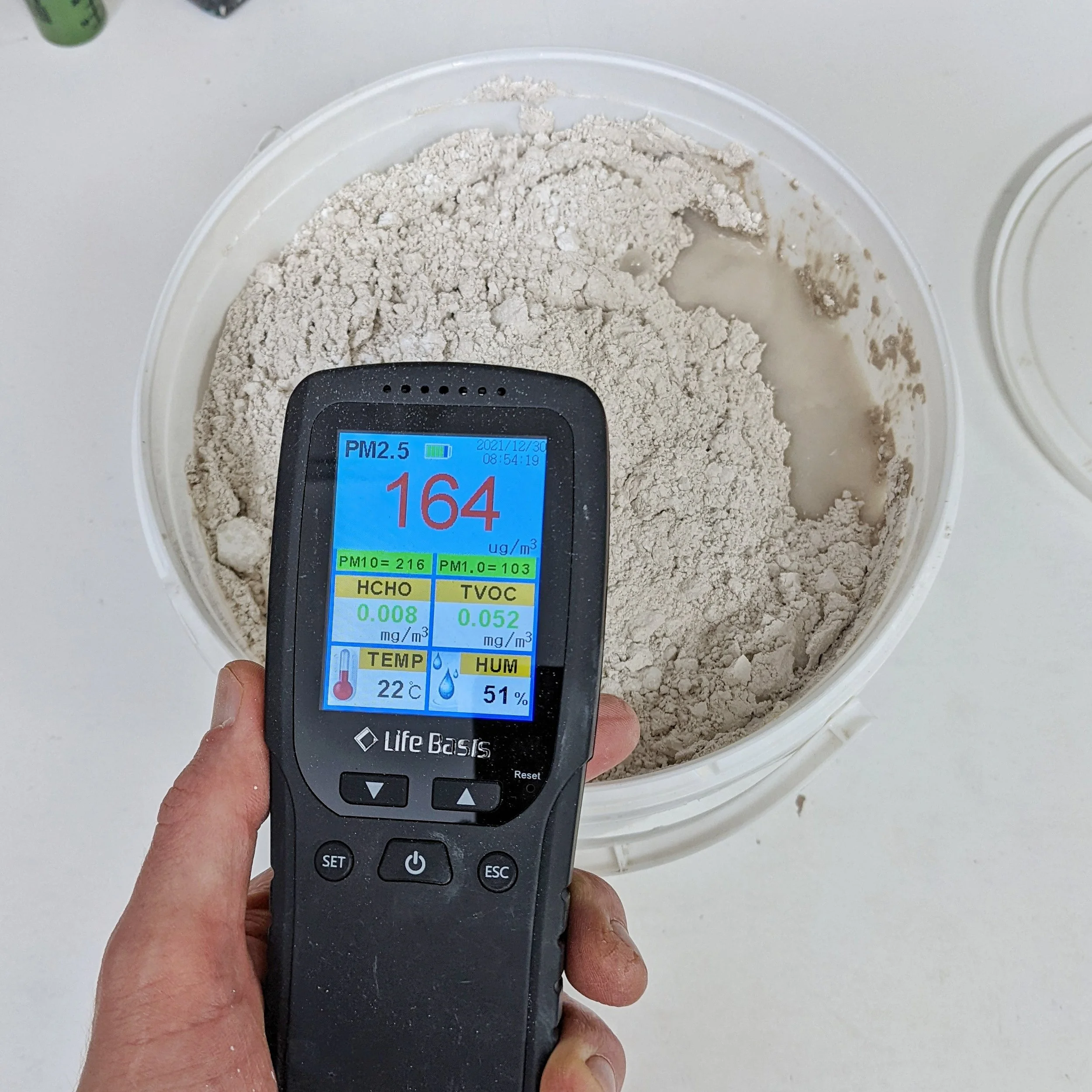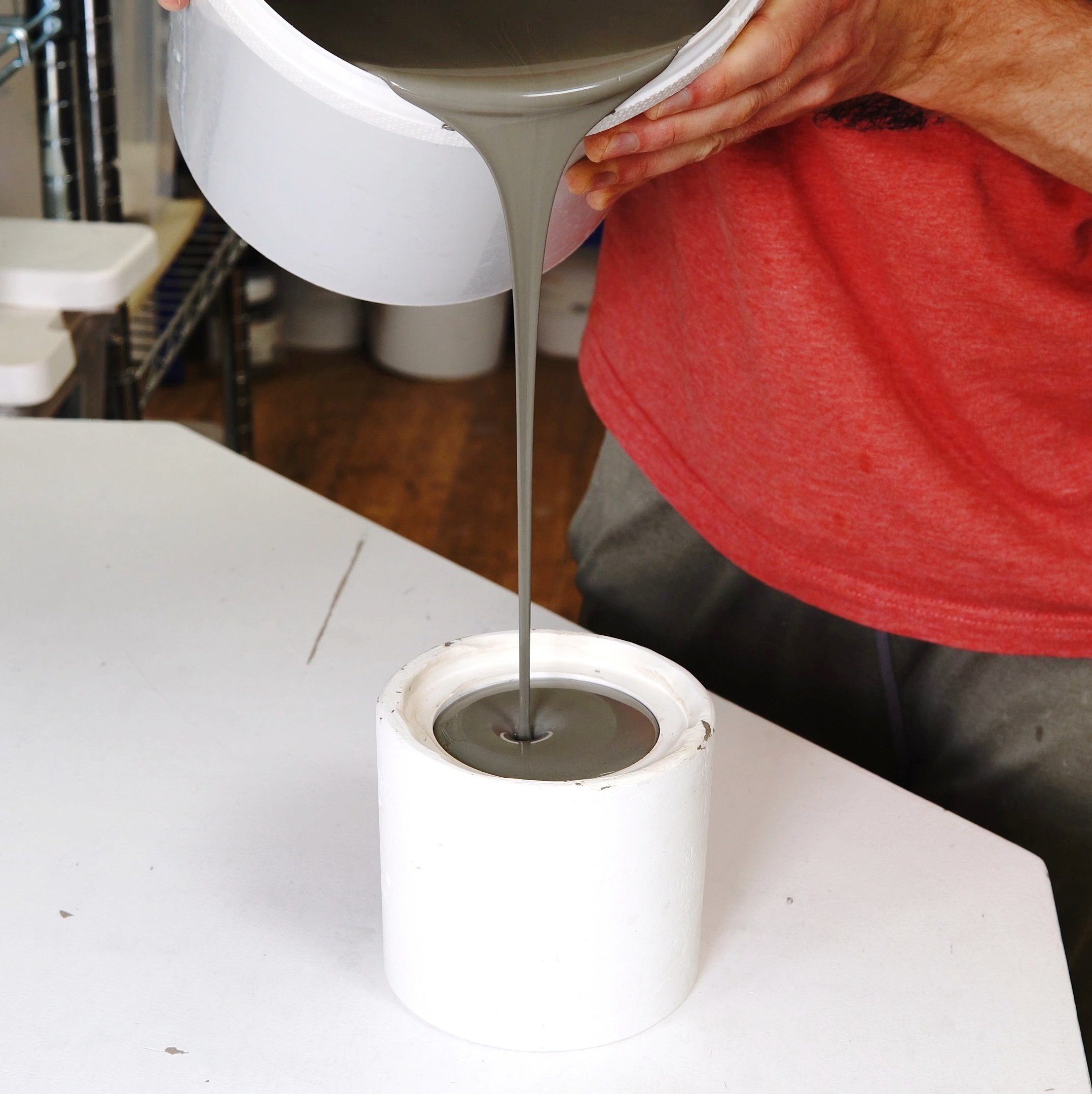What is Specific Gravity?


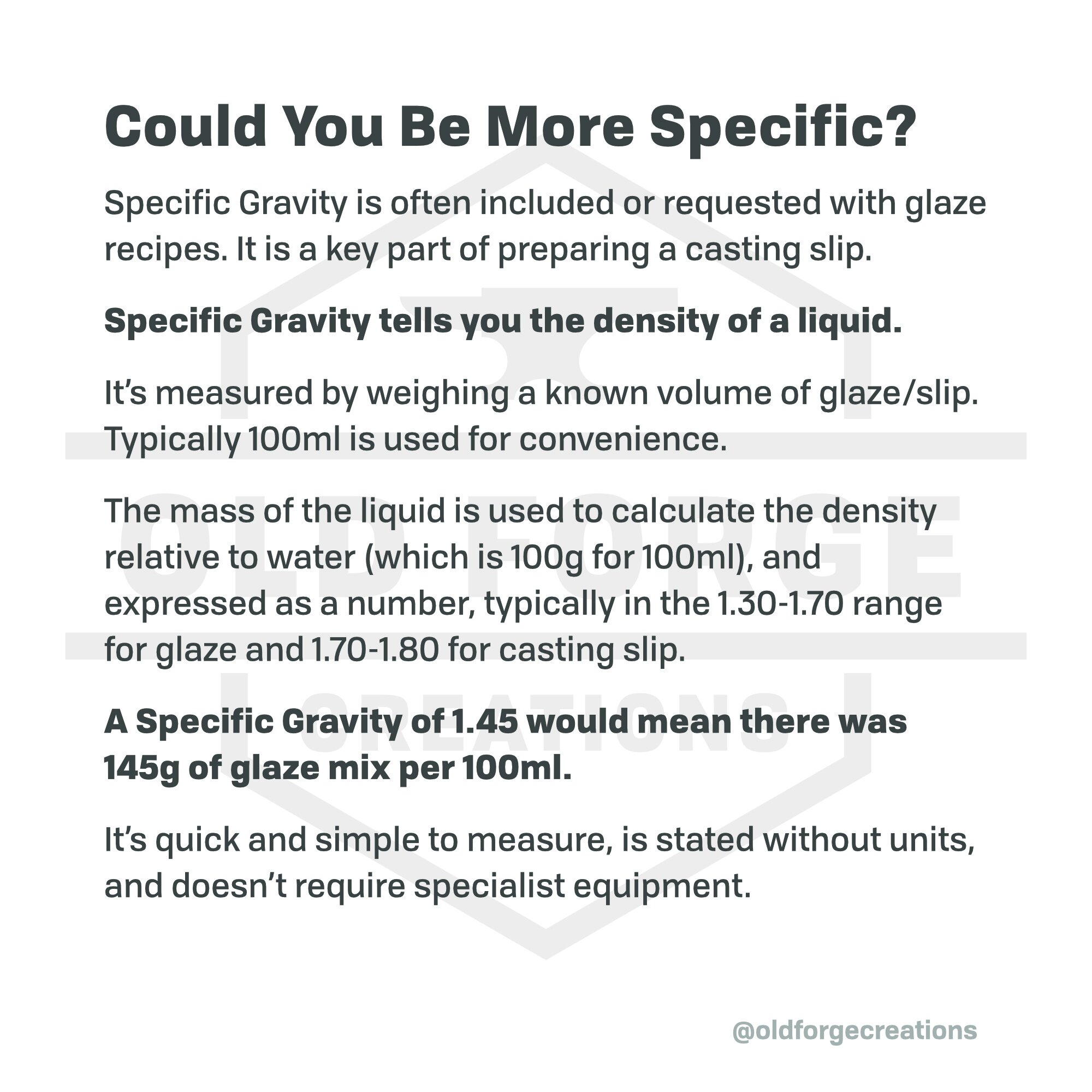
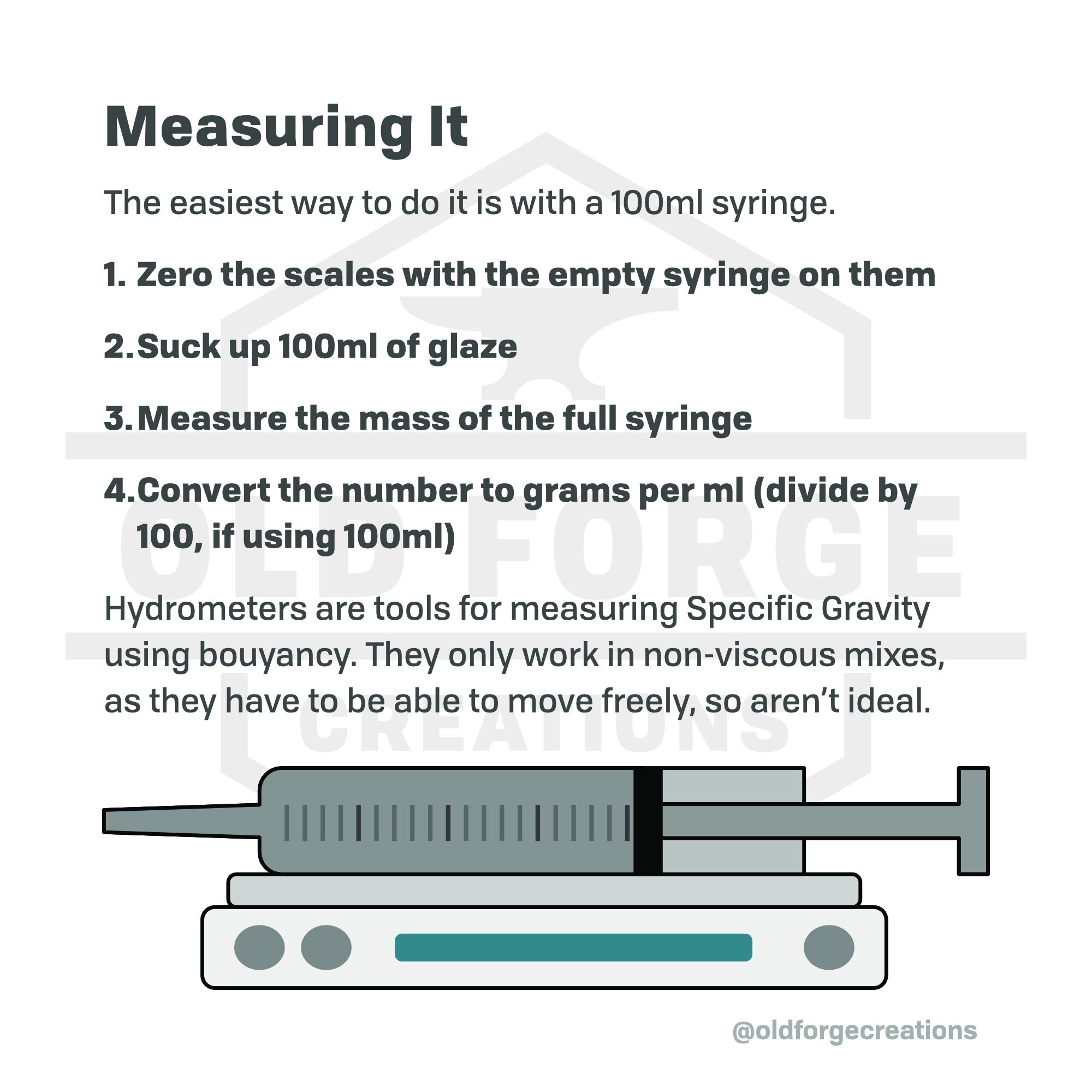

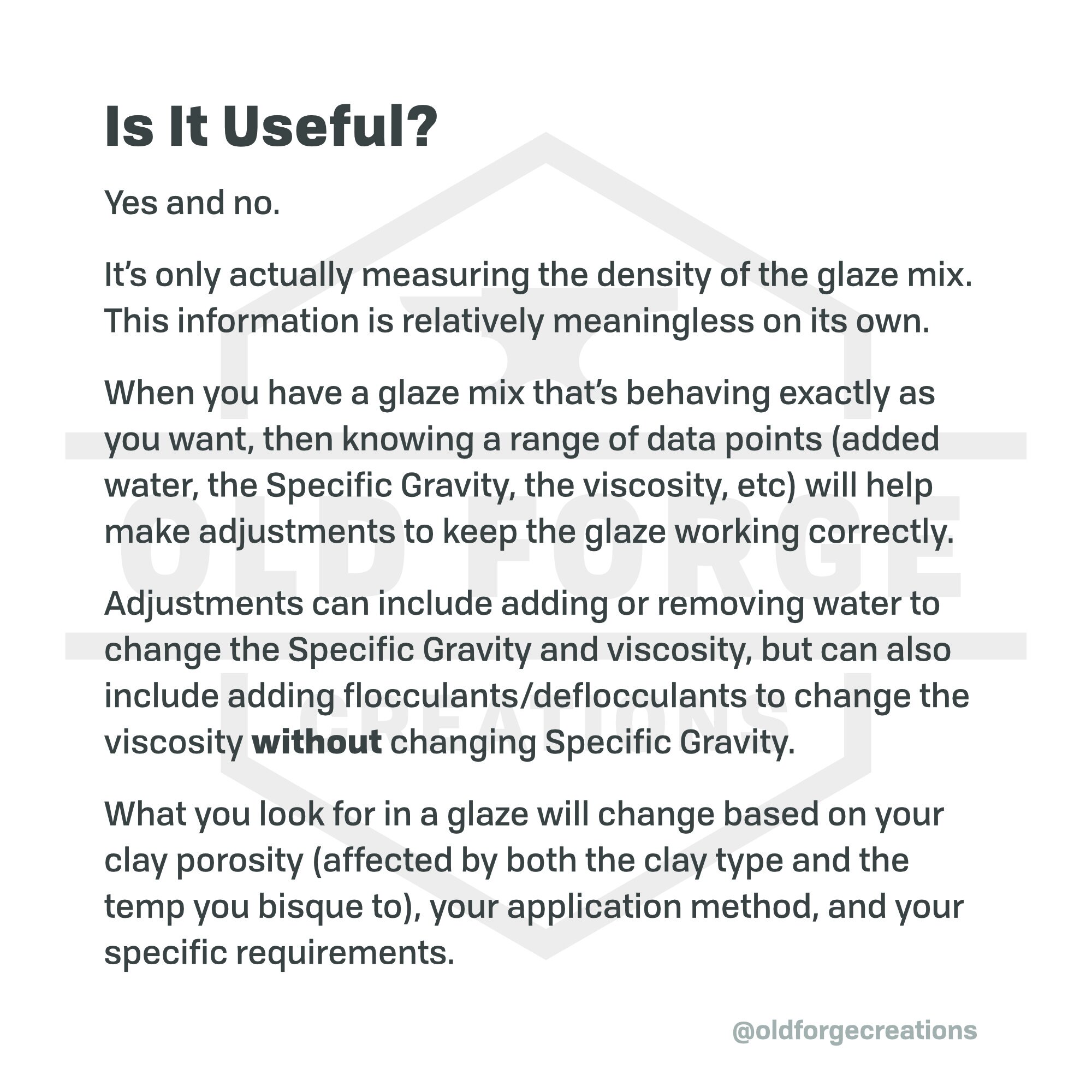
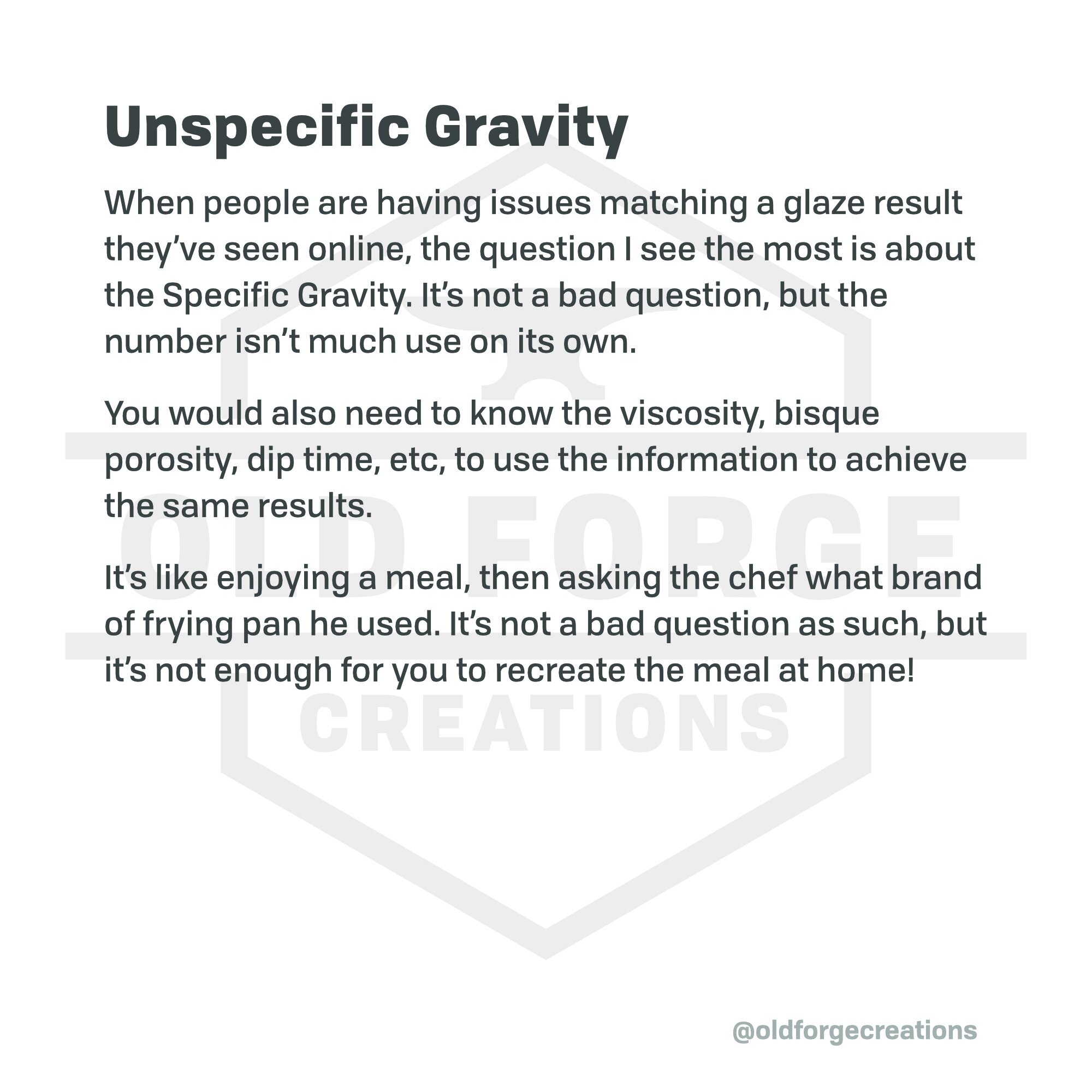
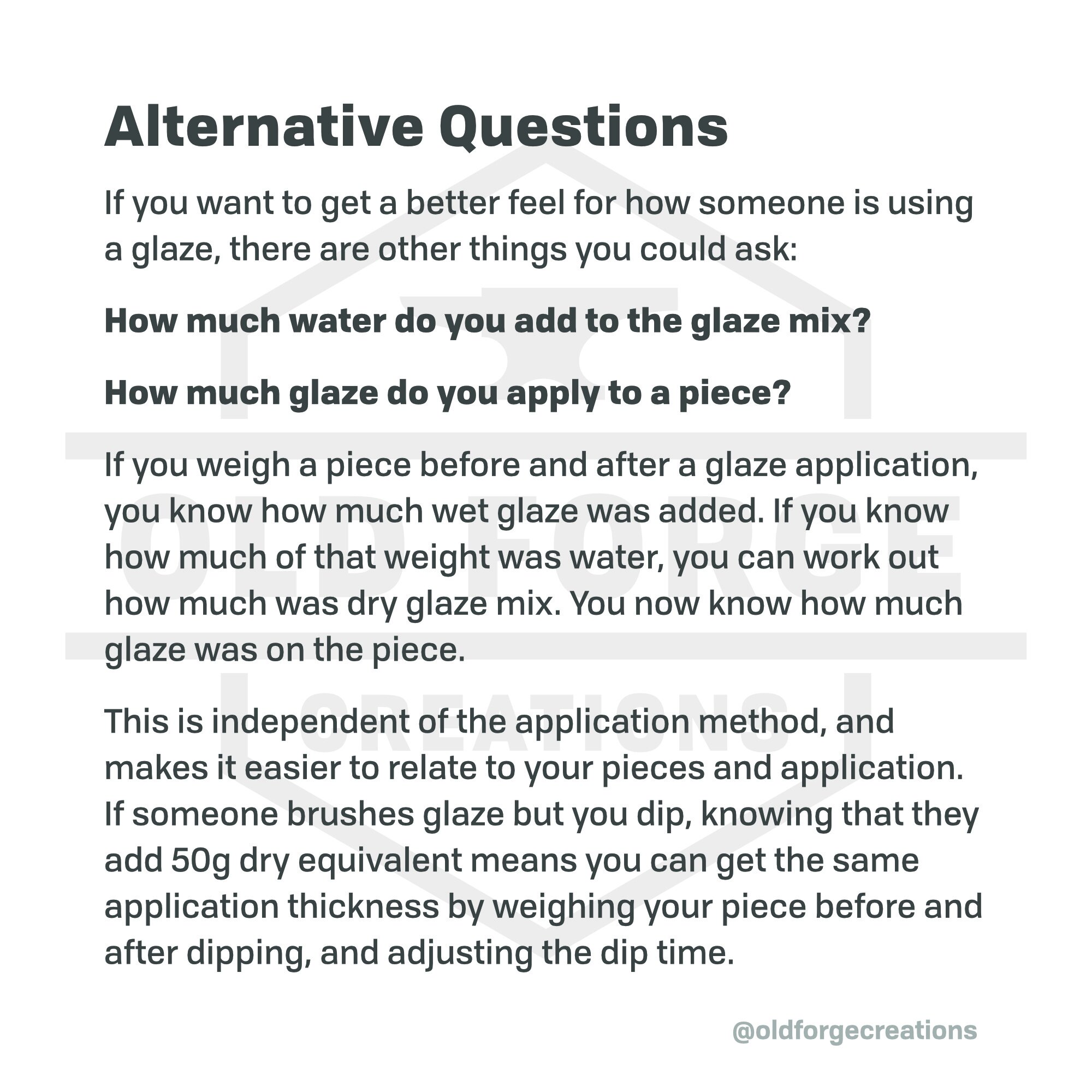
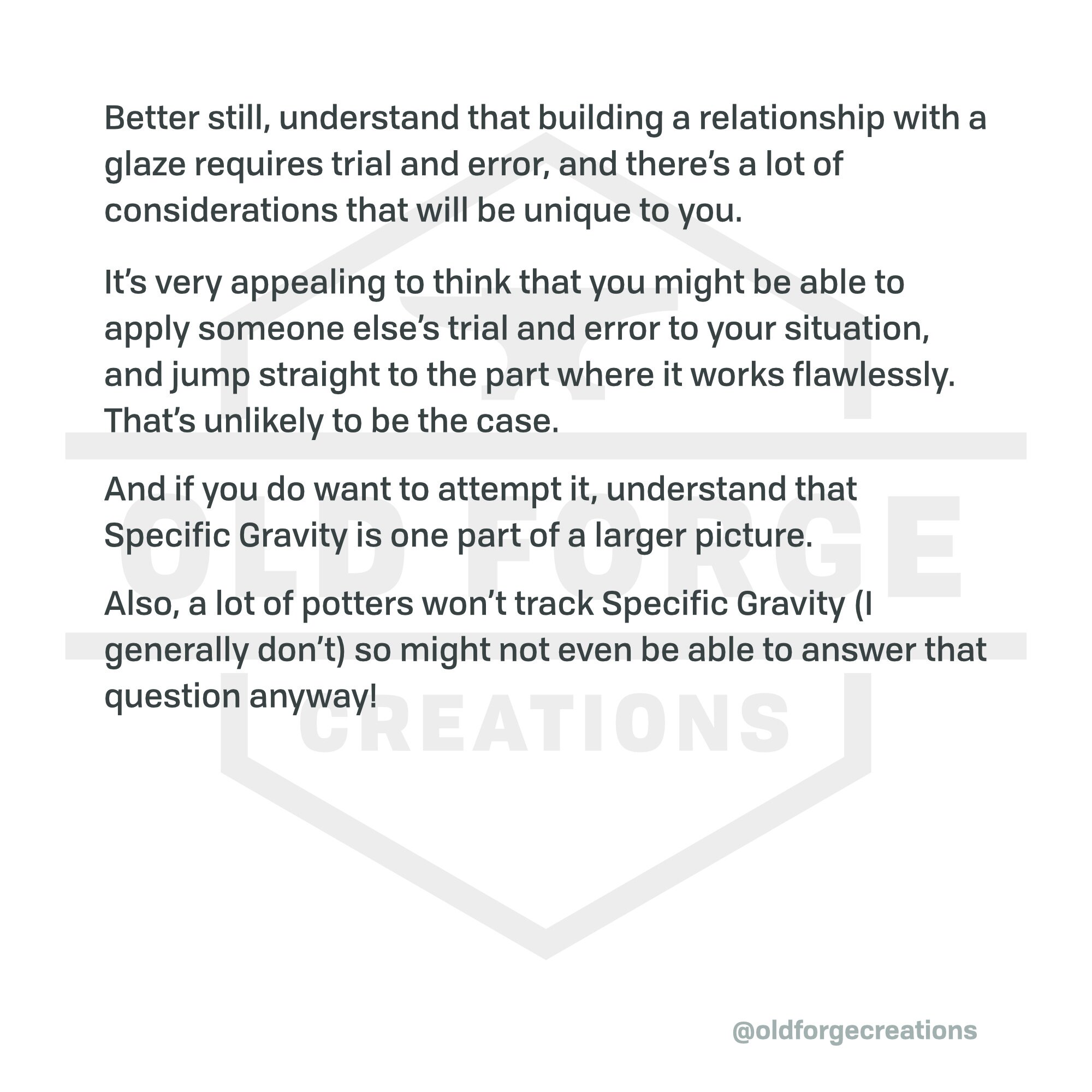

What Is Specific Gravity?
Density
Seriously, that’s it
Could You Be More Specific?
Specific Gravity is often included or requested with glaze recipes. It is a key part of preparing a casting slip.
Specific Gravity tells you the density of a liquid.
It’s measured by weighing a known volume of glaze/slip. Typically 100ml is used for convenience.
The mass of the liquid is used to calculate the density relative to water (which is 100g for 100ml), and expressed as a number, typically in the 1.30-1.70 range for glaze and 1.70-1.80 for casting slip.
A Specific Gravity of 1.45 would mean there was 145g of glaze mix per 100ml.
It’s quick and simple to measure, is stated without units, and doesn’t require specialist equipment.
Measuring It
The easiest way to do it is with a 100ml syringe.
Zero the scales with the empty syringe on them
Suck up 100ml of glaze
Measure the mass of the full syringe
Convert the number to grams per ml (divide by 100, if using 100ml)
Hydrometers are tools for measuring Specific Gravity using buoyancy. They only work in non-viscous mixes, as they have to be able to move freely, so aren’t ideal.
What Does It Mean?
Essentially, it’s telling you how much of the glaze is water and how much is something else
If you started with pure water and incrementally added glaze ingredients to it, the Specific Gravity would go from 1.00 and increase with each addition of glaze.
This is because the glaze ingredients are denser than water.
Different glaze ingredients have different densities. Denser materials will increase the Specific Gravity more than lighter ones, so ingredient selection matters too.
Is It Useful?
Yes and no.
It’s only actually measuring the density of the glaze mix. This information is relatively meaningless on its own.
When you have a glaze mix that’s behaving exactly as you want, then knowing a range of data points (added water, the Specific Gravity, the viscosity, etc) will help make adjustments to keep the glaze working correctly.
Adjustments can include adding or removing water to change the Specific Gravity and viscosity, but can also include adding flocculants/deflocculants to change the viscosity without changing Specific Gravity.
What you look for in a glaze will change based on your clay porosity (affected by both the clay type and the temp you bisque to), your application method, and your specific requirements.
Limitations
When people are having issues matching a glaze result they’ve seen online, the question I see the most is about the Specific Gravity. It’s not a bad question, but the number isn’t much use on its own.
You would also need to know the viscosity, bisque porosity, dip time, etc, to use the information to achieve the same results.
It’s like enjoying a meal, then asking the chef what brand of frying pan he used. It’s not a bad question as such, but it’s not enough for you to recreate the meal at home!
Alternative Questions
If you want to get a better feel for how someone is using a glaze, there are other things you could ask:
How much water do you add to the glaze mix?
How much glaze do you apply to a piece?
If you weigh a piece before and after a glaze application, you know how much wet glaze was added. If you know how much of that weight was water, you can work out how much was dry glaze mix. You now know how much glaze was on the piece.
This is independent of the application method, and makes it easier to relate to your pieces and application. If someone brushes glaze but you dip, knowing that they add 50g dry equivalent means you can get the same application thickness by weighing your piece before and after dipping, and adjusting the dip time.
Better still, understand that building a relationship with a glaze requires trial and error, and there’s a lot of considerations that will be unique to you.
It’s very appealing to think that you might be able to apply someone else’s trial and error to your situation, and jump straight to the part where it works flawlessly. That’s unlikely to be the case.
And if you do want to attempt it, understand that Specific Gravity is one part of a larger picture.
Also, a lot of potters won’t track Specific Gravity (I generally don’t) so might not even be able to answer that question anyway!
Casting Slip
I’ve mainly been discussing glazes up to this point, but slipcasting is one of the situations where Specific Gravity is crucial because it relies heavily on deflocculants to adjust viscosity.
Slipcasting uses liquid clay with as little water in as possible. In order to achieve this, a deflocculant is added to make the slip less viscous. The deflocculant will damage the plaster moulds over time, so minimising deflocculant is also desirable.
By balancing Specific Gravity and viscosity (measured by a ford cup) it’s possible to find and maintain an optimal ratio of clay, water, and deflocculant.
